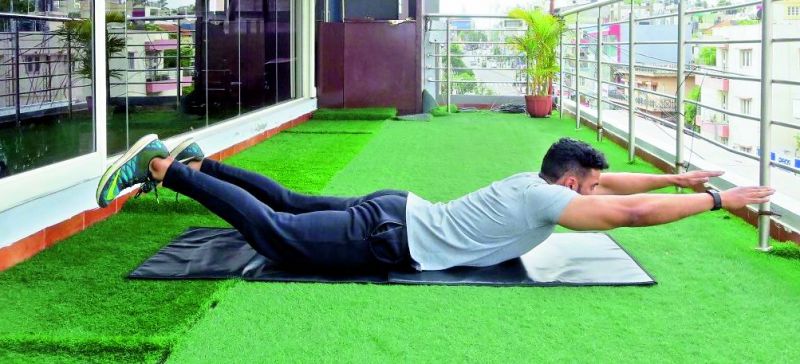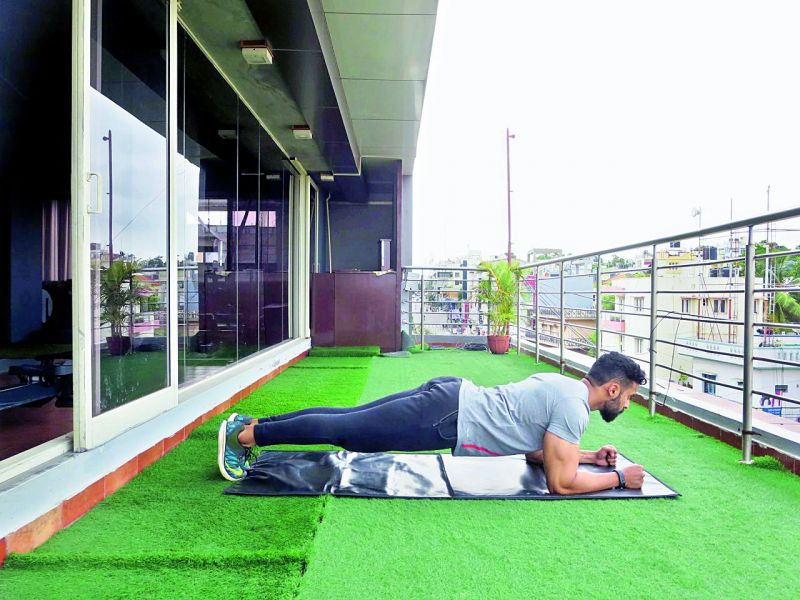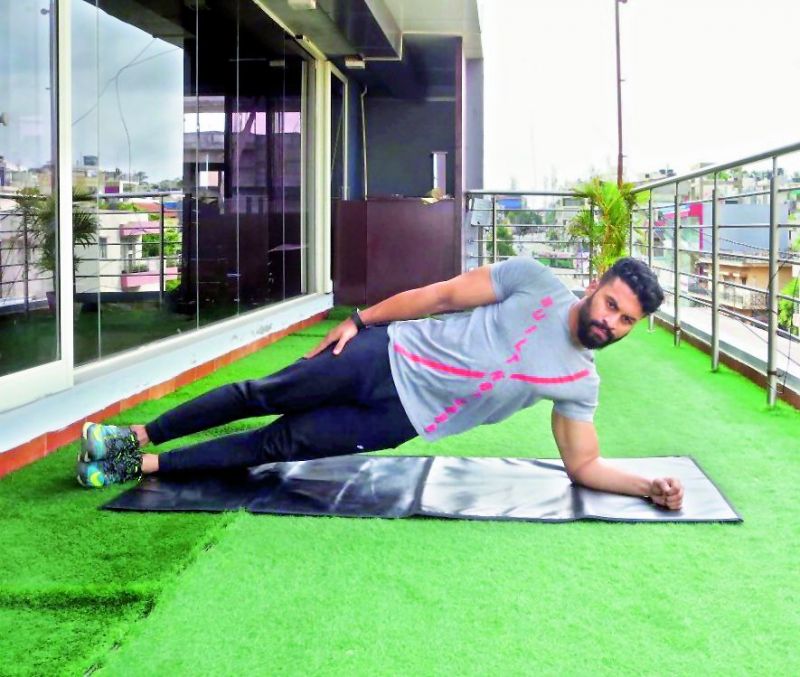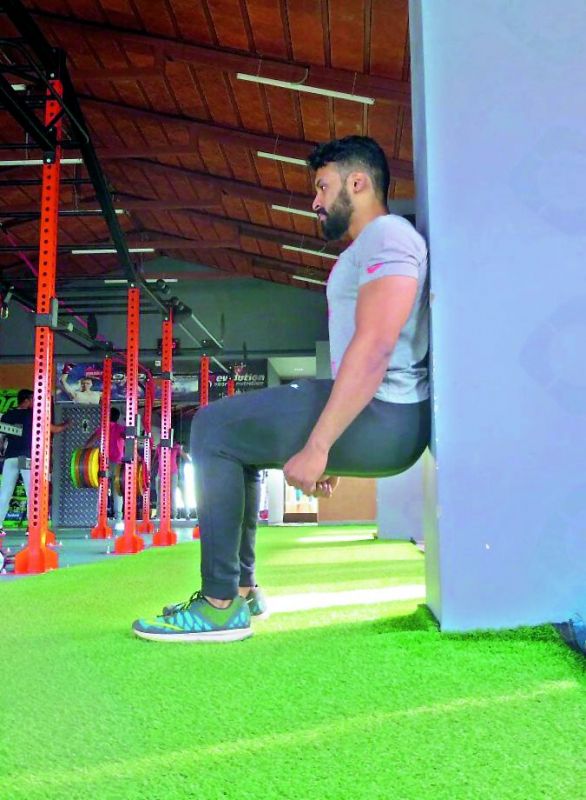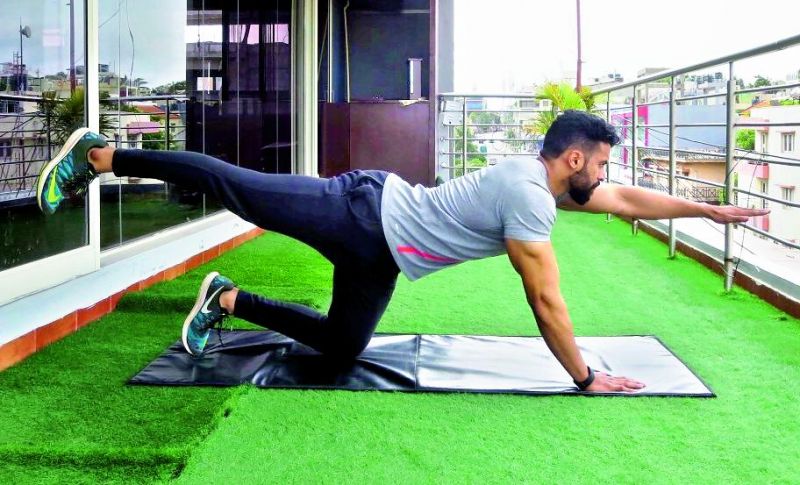FIFTY going on NIFTY!

A lot has been written about the perils of working out at home. But again, as an expert, I believe there are exercises that could be done at home without any weights, suitable for people over 50 as well. All the exercises listed here are basic, and will also help strengthen core muscles and lower back. This can be practiced without the supervision of an instructor.
— The writer is a part-time fitness trainer based in Bengaluru.
Push-ups
Push-ups are one of the simplest yet most beneficial exercises one can do to gain strength and muscle. From young to old, anyone can include it in their daily routine. It uses one’s own body weight as resistance, working your upper body and core at the same time.
Direction
Position your body with your arms straight out, abs tight. Hands and arms should be positioned slightly below the shoulders. Lower your body until your chest is an inch or two above the floor. Push your torso away from the ground until your arms lock, then repeat.
Superman exercise (prone lying)
Superman Exercise is a popular back rehabilitation exercise. It helps you strengthen your lower back. Prone Superman exercise is a great position to start out. It has the advantage of taking the pressure of the knees and pelvis, making it a useful starting position with sore knees, hips or poor pelvic stability. It is also helpful for individuals with poor spinal muscle control when starting out.
Direction
To begin, lie straight and face down on the floor or exercise mat. Your arms should be fully extended in front of you. This is the starting position. Simultaneously, raise your arms, legs, and chest off of the floor and hold this contraction for two to five seconds.
Tip: Squeeze your lower back to get the best results from this exercise. Remember to exhale during the movement. Slowly begin to lower your arms, legs and chest back down to the starting position while inhaling. Repeat.
Elbow planksThe plank is one of the best exercises for your core as it builds isometric strength to help sculpt the waistline and improve posture. Depending on the type of plank you try, you can also engage your back, arms, shoulders, glutes and hamstrings. The elbow plank is an amazing core exercise that strengthens the shoulders and works out the core muscles, it also helps to stretch the legs and work on the upper arms. After a brisk walk or run, it is better to stretch your body and relax all the muscles. Your workout routine is incomplete without a dose of plank poses.
Direction
Start on the floor, resting on your forearms and knees. Push off the floor, raising up off your knees onto your toes and resting mainly on your elbows. Contract your abdominals to keep yourself up and prevent your hip from sticking up. Keep your back flat. Hold as long as you can. Aim for 20-30 seconds in the beginning and work your way up to a minute, as you get stronger. Repeat thrice.
Side planks
Direction
Turn onto your left side with your legs extended, and your feet and hips resting on the ground and stacked on top of each other. Place your left elbow directly under your shoulder to prop up your torso, and align your head with your spine. Gently contract your core and lift your hips and knees off the floor; this strengthens the sides and deep ab muscles. Hold for 10 to 30 seconds, gradually working up to a minute, and return to the starting position. Roll onto the other side and repeat.
Wall sit
Wall-sitting primarily builds isometric strength and endurance in glutes, calves, quadriceps and hamstrings. Apart from these, it also increases the strength of the calves and helps in flexibility of the body.
Direction
Lean against the wall with your feet planted firmly on the ground. Your feet should also be about two feet away from the wall. Now slowly slide down the wall with your back pressed against it until your legs are bent at a 90 degree angle. This angle is very crucial because if your thighs are not parallel to the ground, your muscles will not get a good workout. Your knees should also be directly above your ankles and your back should be touching the wall at all times.
Kneeling SupermanThis exercise is a useful and more challenging back strength and stability exercise that provides progression from the prone position. The kneeling position requires more pelvic and spinal control than prone position, and also increases the demand on the shoulder muscles to help stabilise the position.
Direction
Maintain a small inward curve in your lower back throughout the exercise, and keep both hips facing the ground. Extend your right leg out behind your body, kneeling on the left leg and extend your left arm in front of your body. Slowly raise your right heel up to buttock height, keeping your right toe pointed to the ground throughout. Lower your toe back to the ground and repeat up to 10 times.
Repeat this exercise by changing the leg and arm.

